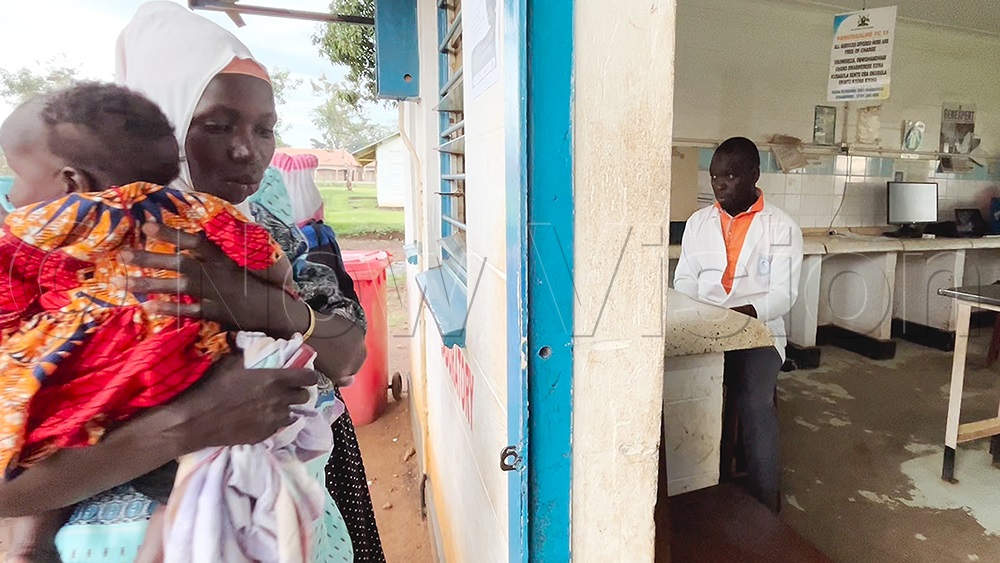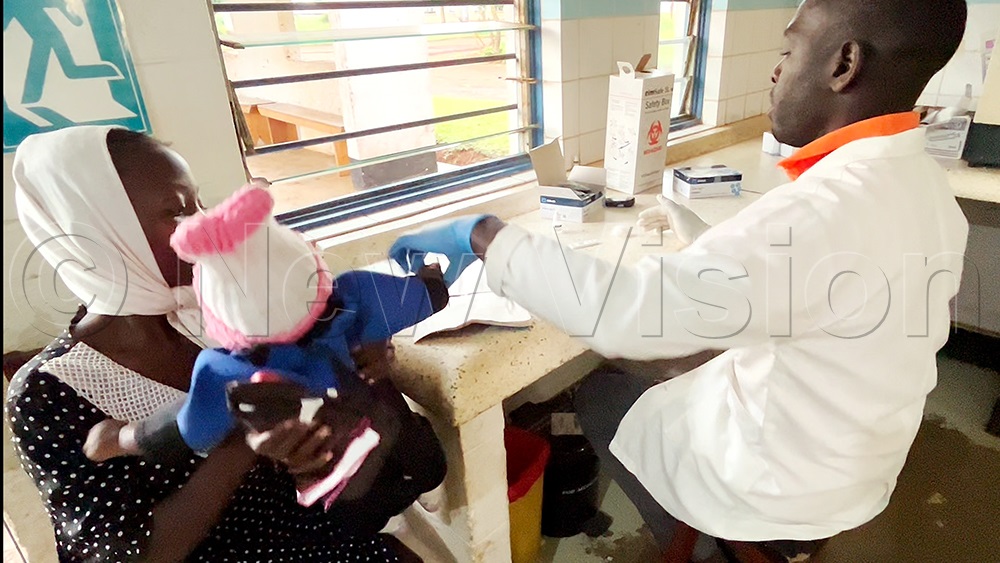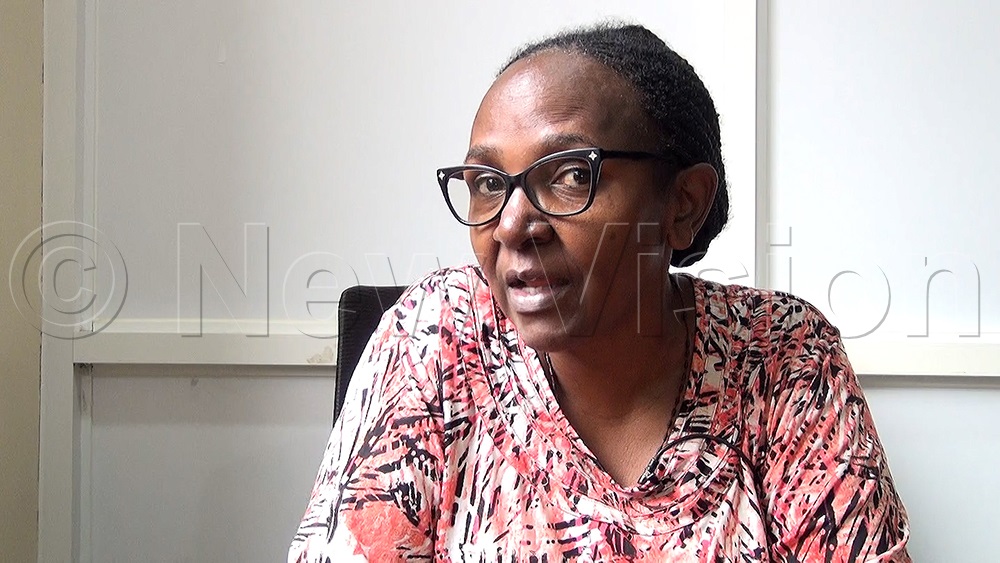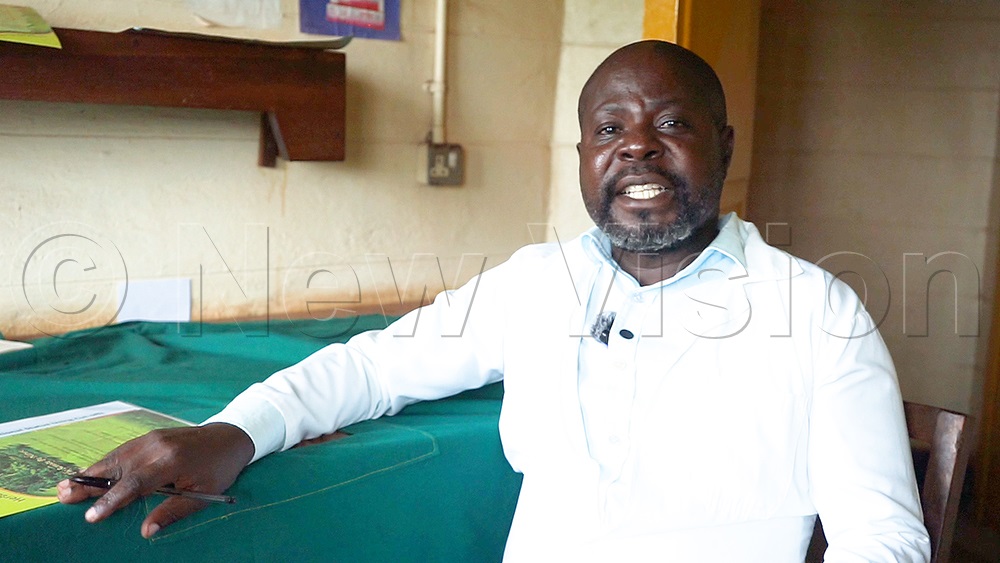Malaria: 24 hours to save a life
The 24.2 Hours Initiative aims to ensure that anyone showing symptoms of malaria is tested and treated within just 24 hours, and within two hours of reaching a clinic.
Consultation room at Namungalwe Health Centre III. (Credit: Raziah Athman)
_______________
The campaign that has turned the fight to end malaria into a race against time has taken shape, just a few months since its inception.
The 24.2 Hours Initiative aims to ensure that anyone showing symptoms of malaria is tested and treated within just 24 hours, and within two hours of reaching a clinic.
To gauge progress and impact, we visited Iganga, one of the high malaria burden districts in the country.
The first two hours
It is drizzling as Nabirye Florence arrives at Namungalwe Health Centre III. She took a difficult trip from her home in Kabira village, which is about 30km away.
Nabirye Florence at the laboratory. (Credit: Raziah Athman)
She comes in panting, holding her baby, who is showing malaria symptoms - tight.
At the reception, the patient’s details are recorded, and she then proceeds to the consultation room.
Workers are keen on testing for malaria quickly.
“The difficulty reaching here from Kabira was finding the transport fare; I paid sh5,000. I also had to walk a little before finding the means. I think it is the mosquitoes disturbing us. My child has malaria because of mosquitoes. They bite us a lot. If they can be eliminated, it would help in reducing malaria,” Nabirye narrates.
At the laboratory, there are more women in the queue having their babies tested for malaria.
The technician is drawing blood and dropping it on a strip the size of a pen, which instantly indicates a positive or negative result for malaria parasites. That is the Rapid Diagnostic Test (RDT).
Nabirye’s baby has malaria. It has been caught early, and the medics believe that with the treatment given, they can go back home.
Uncomplicated malaria is treated with Artemether-lumefantrine, commonly known as Coartem. Severe cases require intravenous (IV) or intramuscular artesunate for all age groups, including women and children.
A 2025 report titled Malariometric indices from Iganga indicates that the malaria episodes per child per year were 1.5 and 0.79 in the active and passive follow-up arms, respectively.
This means children who are checked regularly get malaria once and a half times a year, while those who were not checked were recorded as having it less than a year.
Preventing malaria complications
Nakato Barbara is from Namungalwe. Her baby has tested positive for malaria.
She says that even if the health centre is not very far, in the village, it is sometimes difficult to find a motorcycle taxi (boda boda) that can bring her to the facility.

Nakato Barbara's baby gets tested for malaria. (Credit: Raziah Athman)
The goal of the 24.2 initiative is simple: to save lives, especially among children under five, who account for most malaria deaths in the country.
“If you come as early as 24 hours after you develop the signs and symptoms of malaria, we have good teams in facilities to ably manage you, and make sure that we easily treat the malaria. We don’t want to have complications. We have seen many children getting convulsions, and this can greatly affect a child,” Dr Karim Mwebaza Muluuya, Deputy District Health Officer and the Malaria Focal Person, Iganga district, explains.
In a busy neighbourhood in Namungalwe, there are children playing in front of their houses and women going about their busy day.
They show us the modest home of Nankya Prossy, whose one-year-old baby has a high fever, chills, and looks very tired.
A young child can die if these symptoms are not checked quickly.
Her baby has malaria, and she must reach a hospital immediately. At this point, every minute counts.
The government’s 24.2 Initiative urges people to seek medical care within 24 hours of the first malaria symptoms, so health workers can diagnose and begin treatment within two hours, before it turns deadly.
According to the ministry of health Weekly Malaria Report, in 2023, Iganga reported over 3,000 cases per week.
That number is going down regardless of the challenges for patients from rural areas to access medical services.
“Getting here from my house can be a challenge. I must use a motorbike taxi, and sometimes I don’t have enough money to pay the rider to get me to the hospital for my baby to receive treatment,” Nankya says.
Bridging the gaps with awareness
To bridge the gap, health workers under the Integrated Community Case Management program prioritise young children, ensuring they can receive treatment at the nearest facility.
The task force has collaborated with the emergency medical services department to make severe malaria a priority emergency.
Dr Jane Irene Nabakooza, Technical Lead, Malaria Prevention and Vaccine, Ministry of Health. (Credit: Raziah Athman)
Currently, if anyone is notified that there is a severe malaria patient in a hard-to-reach area, they are able to pick that patient and take them to a point where they can receive care without delay.
“Apart from training, we have also made sure that the medicines, supplies and equipment required to resuscitate the patient are available at the care point,” says Dr Jane Irene Nabakooza, the Technical Lead, Malaria Prevention and Vaccine, Ministry of Health.
“Most of the facilities that provide severe malaria care actually have emergency care points at the out-patient department, so that whoever is identified to have severe disease and requires care within two hours, they are able to receive it within the stipulated two hours. And then our village health teams have been taught about the danger signs, and once they see the danger signs, they refer the patient as soon as possible,” she adds.
There are awareness campaigns to help families recognise malaria symptoms early and act fast.
Things are changing in Iganga as Munyira Micheal Gerald, the clinical officer at Namungalwe Health Centre III, explains.

Munyira Micheal Gerald, Clinical Officer, Namungalwe Health Center III. (Credit: Raziah Athman)
“We were losing many children here. The treatment we were giving, including quinine, artesunate, and others, took time – three to four days to five days. But since this initiative was started, we have managed to save the lives of these children.”
Leading cause of death
According to the World Health Organisation, malaria remains a leading cause of death in Uganda.
In 2023 alone, the country recorded over 12 million cases and about 2,700 deaths.
On any given day, dozens of children are brought to the Namungalwe facility for malaria treatment.
The health centre is a sanctuary for parents like Nabirye Florence, who travel long distances in search of healthcare services.
“As the Iganga district local government, we have a very serious team for the management of malaria. They are at different levels… Health centre IIs, health centre IIIs, health centre IVs and the general hospital. But we also have trained VHTs who are managing malaria under the ICCM approach, so we encourage people to approach these people wherever they feel they have signs and symptoms of malaria,” Dr Muluuya says.
Children under five are still the most vulnerable, accounting for more than 70% of malaria deaths. The clock ticks as a child is running a high fever.
“I encourage people to come as early as possible to the facilities to ensure malaria is tested and treated in time,” Dr Muluuya says.
Other malaria interventions
Uganda rolled out the malaria vaccine in April 2025. Alongside mosquito nets and indoor spraying, scientists are exploring new tools - including gene drive technology – to eliminate the disease.
They are working to reduce the strength of the malaria-transmitting mosquitoes.
“Most people fear that if we bring in novel genetic control tools, they are going to wipe out all mosquitoes, no. It is only those few species that have the capability to bite you and transmit malaria to you, to your mom, to the little girl who is sleeping or to the baby,” Dr Martin Lukindu, Researcher, Target Malaria, says.
The ministry of health is currently evaluating the intervention, as Dr Nabakooza explains.
“For the national malaria elimination division to consider any technology, we usually conduct research to make sure that it is feasible, it is acceptable, it is cost-effective, and it will work in our kind of context. For now, I wouldn’t be firm to say that we are considering what we are doing as ministry of health is to evaluate the mosquito gene drive technology. If we get positive results, then we shall consider it for our national strategic plan.”
It is a complex approach and work in progress, which awaits approval.
But Iganga’s effort to fight malaria continues with local interventions.
They recently piloted an approach which combines community mobilisation, test and treat, indoor and outdoor spraying, and surveillance.
“This spraying was quite different from the spraying in other districts. From Iganga, we will get to other districts, and our main goal is to see that we eradicate malaria from the Busoga region. We want to make sure that malaria is no longer a challenge to the people,” Dr Muluuya says.
The government hopes that with malaria under control, mortality and the related economic losses will be reduced.
Malaria is preventable and treatable.
Yet millions in the country still face impossible odds.
The 24.2 Hours Initiative aims to change that - giving every child a chance to fight.